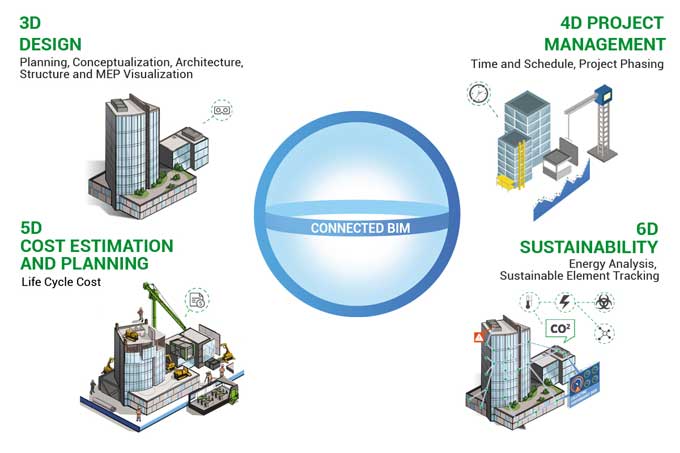The Benefits of BIM managing Construction Projects Onshore or Offshore
Tweet
The construction industry all around the world is facing labor shortages. The industry experienced a period of shrinkage in the last decade. Various reports warn that labor shortages are reaching crisis proportions and will continue into 2019. Over the past two decades, the construction industry has averaged just one percent productivity growth.
Approximately two out of three people will live in cities by 2050, as the global population is predicted to reach 9 billion. Throughout the history of human civilization, there has always been a high demand for construction and it is not in doubt that that demands will continue to grow.
It may be possible to achieve that goal by using both an onshore and offshore BIM model. By using the model, you will be able to increase productivity, reduce costs, improve collaboration, and gain access to expertise. For construction companies, this is the simplest way to succeed.
Cost Effective
By using this approach, companies don't have to hire additional experts or hire fresh talent and spend time and money training them.
An offshore expert can significantly reduce the development and design costs of BIM projects. A transparent rate will be provided by the outsourcing firm, as well as dedicated resources. In this way, construction firms can budget effectively by considering other costs into account. As well as scalability, there is also the benefit of flexibility.
As a project progresses or more work is required, offshore teams can add more resources. A ramp down of this team can take place after that phase if the goal is achieved. A company with in house resources might have a hard time accomplishing that.
Core Business Focus
In addition, companies can focus more on their execution strength by utilizing the onshore & offshore business model. Construction projects require high levels of project management capabilities and advanced execution skills. The best place for construction companies to get the most bang for their buck is here. An important aspect of project profitability is this, so a construction company should focus on it.
Time Effective
In BIM projects, using an onshore and offshore model leads to better quality work within the required timeframe. By assigning special subtasks to the onshore and offshore teams, this can be achieved. Outsourcing can save companies thousands of dollars per year by eliminating the need to recruit and train new staff.
Furthermore, it may take time for the construction industry to understand and adopt new technologies. Offshore teams are well versed in the latest technologies, resulting in a quicker startup time.
Less Error
The complexity of projects can make construction design more challenging and time-consuming. A comprehensive, transparent, and actionable model can be created by offshore firms with the relevant BIM experience. A variety of team?s onsite can then collaborate using this model. As a result, construction will be more efficient, handoffs will be easier, collaboration will be better, and safety will be improved.
Wrapping it Up
The rest of the global economy averaged about one third of this growth rate. This scenario puts construction firms at risk of responding to market needs late, losing bids for important projects, and being unable to innovate.
To get online demonstration, watch the following video tutorial.
Video Source: OpenProject | Open Source Project Management
BIM is increasingly being used in projects across the country. Since skilled resources are in short supply, most companies in the world are adopting onsite and offshore implementation models for BIM success.
During any project's construction, the onsite team consumes the BIM models created offshore. Regular communication and feedback loops ensure that models are always accurate and up to date.

Gallery
Feel free to contact us for BIM requirements. One of our representative will respond you within 24 Hours. Send us your projects requirement today and grow your project.
Explore More !







